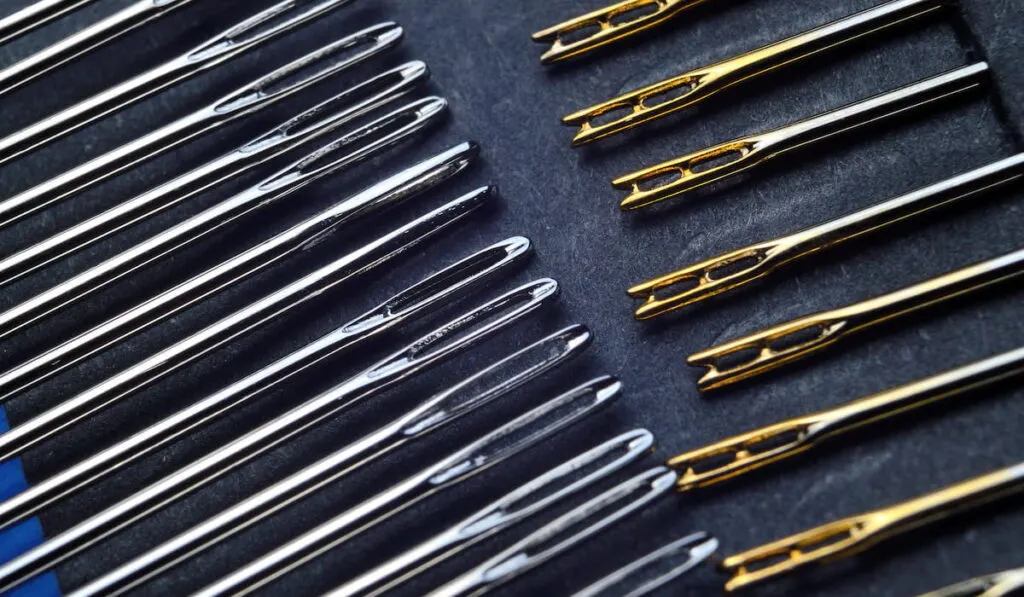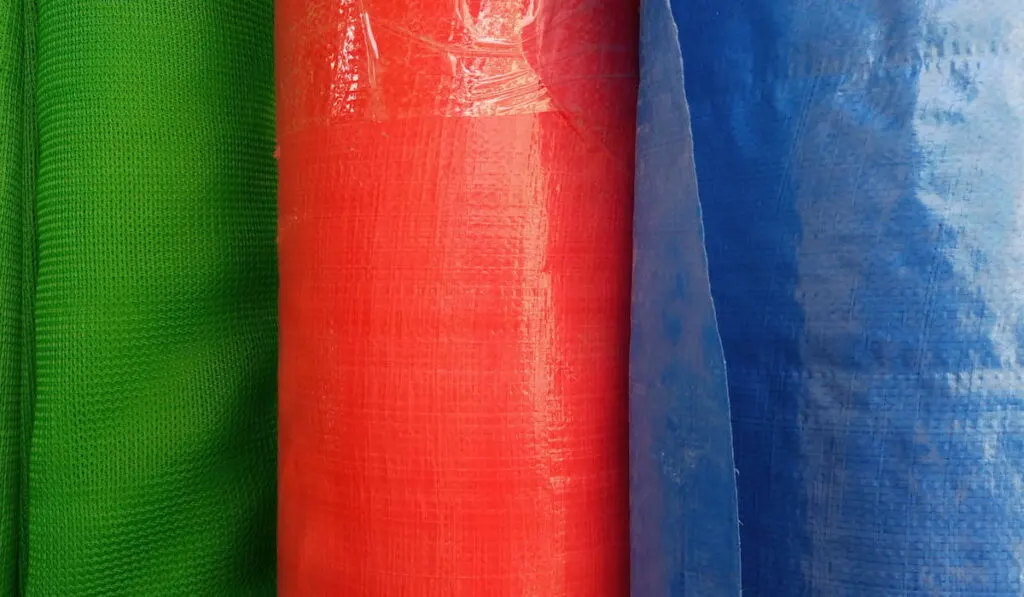A tarp is something used widely in homes and commercial settings. Trucks use it to cover loads, and every weekend thousands of American families are sleeping on tarps in campgrounds across the country. We use tarps to protect our furniture in storage, shade things in the yard, and a million other purposes.
A high-quality tarp isn’t cheap, so when it rips, a lot of people are left wondering what the best way is to fix it. Some people suggest glue, duct tape, and other methods, but sewing is a realistic option that is often a longer-term solution. The only issue is sewing it with the right needle and thread thickness to make repairs or alterations last.
Can you sew a tarp? Yes, you certainly can, but just don’t go thinking you can do it effectively with that small hotel sewing kit.

Whether you’re repairing a torn tarp or want to make any sort of alterations to an existing tarp, here are seven tips you can use to get it right.
Tip 1 – Sewing Tarp By Hand? Use Backstitching
If you have the patience of a saint and a lot of time on your hands, it’s possible to sew a tarp by hand. However, you will need to use backstitches throughout. It’s one of the strongest hand-stitches, and, when done correctly, it can be stronger than machine stitching.
Tip 2 – Machine Stitching Is Much Faster
Using a sewing machine is the way to go if you’re sewing tarp. It will save you time and frustration. Of course, not everyone has a sewing machine, and many people don’t know where to begin.
A tarp, though, is a good material to use to start learning because, if you ruin it, at least you’re not ruining your favorite dress or suit pants.
Tip 3 – You Will Have to Waterproof It Once You’re Done
People use tarps for a lot of reasons, but one of the main ones is to keep things dry. If you sew a hole shut or put on a patch that isn’t waterproof, it sort of defeats the whole purpose.
You’ll need to apply some sort of waterproofing product or use beeswax to make the seams waterproof after you’re done sewing.
Tip 4 – Use Heavy Duty Needles

The needles you use to hem pants won’t work well on thick, coarse material like a tarp.
If you’re trying to sew a poly-vinyl tarp, for example, you’ll likely need to use multiple lines of zig-zag stitching on each seam to keep the stitching in place. To do this, you’ll need strong, larger needles that are capable of getting through the job.
Tip 5 – Ask for Help
If you’re trying to sew a large tarp, keeping it taut and flat is going to be a major pain. You’re going to be dealing with yards of extra fabric that will push and pull from seemingly every angle.
To make sewing your tarp faster and way more effective, enlist the help of one of your kids, a friend, or your partner. They can hold a corner or push down on seams to make sewing a lot smoother.
Tip 6 – Buy a Tear Repair Kit
A lot of places online and camping stores will sell tarp repair kits. These are perfect for when you’re trying to fix a hole or a tear in a tarp you love and don’t want to buy a new one.
They’re not ideal, however, for making any alterations to the size and shape of your tarp. They come with the tools you need to seal the repairs and make your tarp good as new.
Tip 7 – Try a Flat-Felled Seam
Have you ever looked at a pair of jeans? If you look at the stitching, you’ll see two rows of thread close together on most seams. It’s one of the best stitching methods used to keep thick, tough material together.
Flat-felled seams work well on tarps too, and it’s something you should try if you’re new to sewing. It gives you the best odds of your seams holding up to rugged use.
Does Tarp Color Matter?

Can you sew a blue tarp? What about a green or a brown tarp? Do the colors mean anything?
We see a lot of blue, green, and brown tarps used as general-purpose tarps. However, there is no color-coding for tarp use, or colors to indicate a certain material or tarp thickness.
The only consideration you may have when sewing a certain color of tarp is how the stitching will show up once you’re done. It may influence the color of the thread you use for changes or repairs.
What About Needle Size When Sewing Tarp?
The needle size you use will have a big impact on how fast you can work and how well your sewing machine will hold up while you’re sewing your tarp.
For something like a silnylon tarp, you’ll want to use something like a size 14 needle that’s big enough to handle the material and the thread you’re using. Again, you probably want to go with either flat-felled seams or zig-zag seams for the most strength and durability.
If you’re sewing anything by hand, make it easy on yourself and buy a sail needle that’s large and easier to handle. It will make moving in and out of seams a lot less difficult.
Things to Keep In Mind
The biggest thing to remember when you’re sewing a tarp is that the new needle holes and seams will be susceptible to water leaks.
If you’re using the tarp to keep something completely dry, then you’ll need to take the extra step of waterproofing the new seams.
If dryness isn’t so critical, then you can leave it as is. It may not be a huge deal if you’re using it under a tent and you have a few drops to get through a hole you repaired. Luckily, waterproofing will seem like a breeze after you’ve gotten through the difficulty of sewing your tarp.
